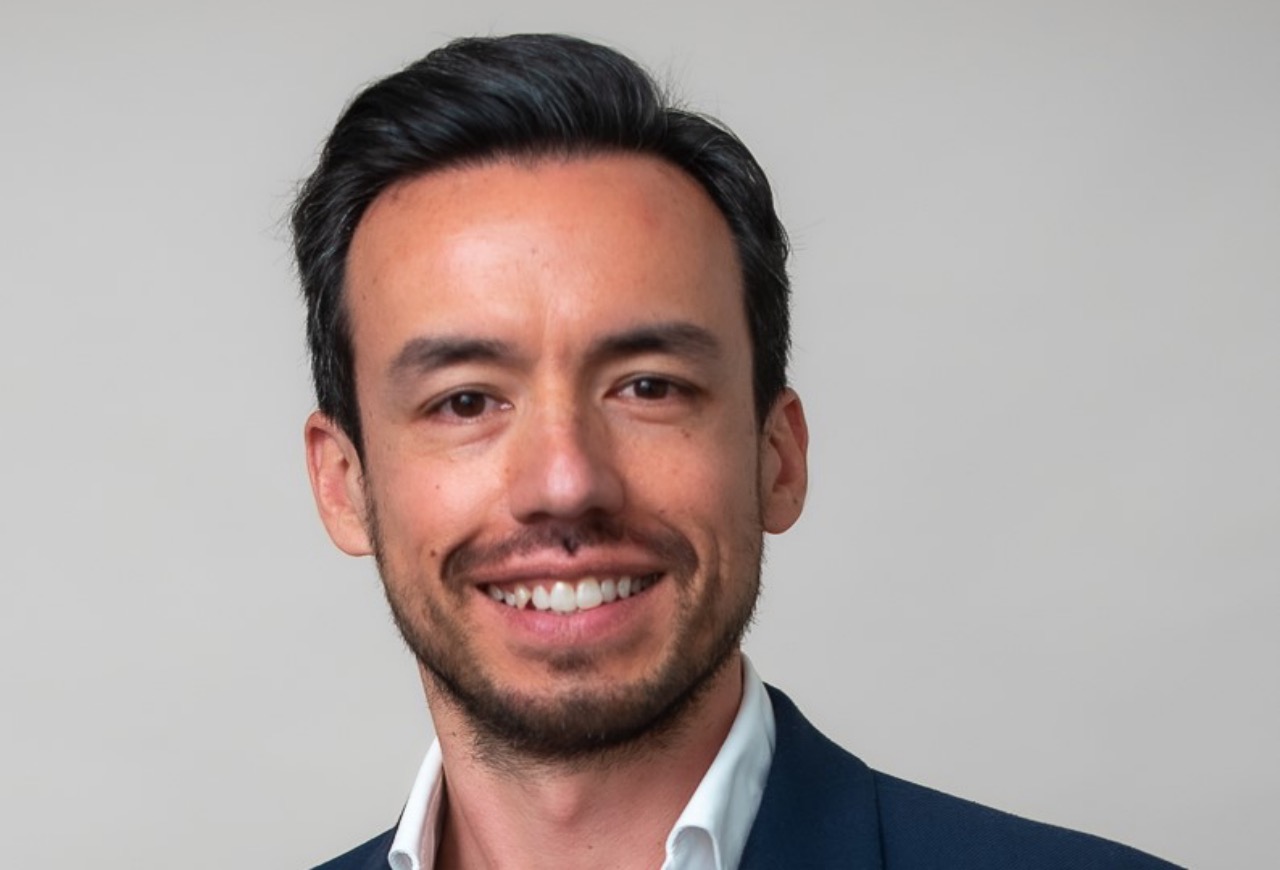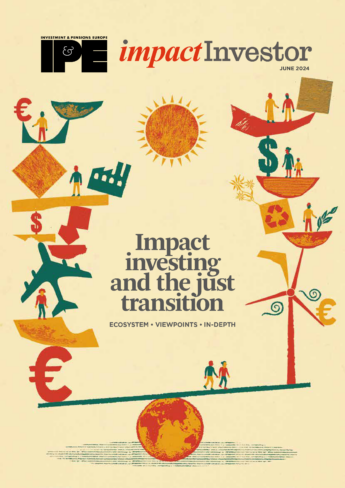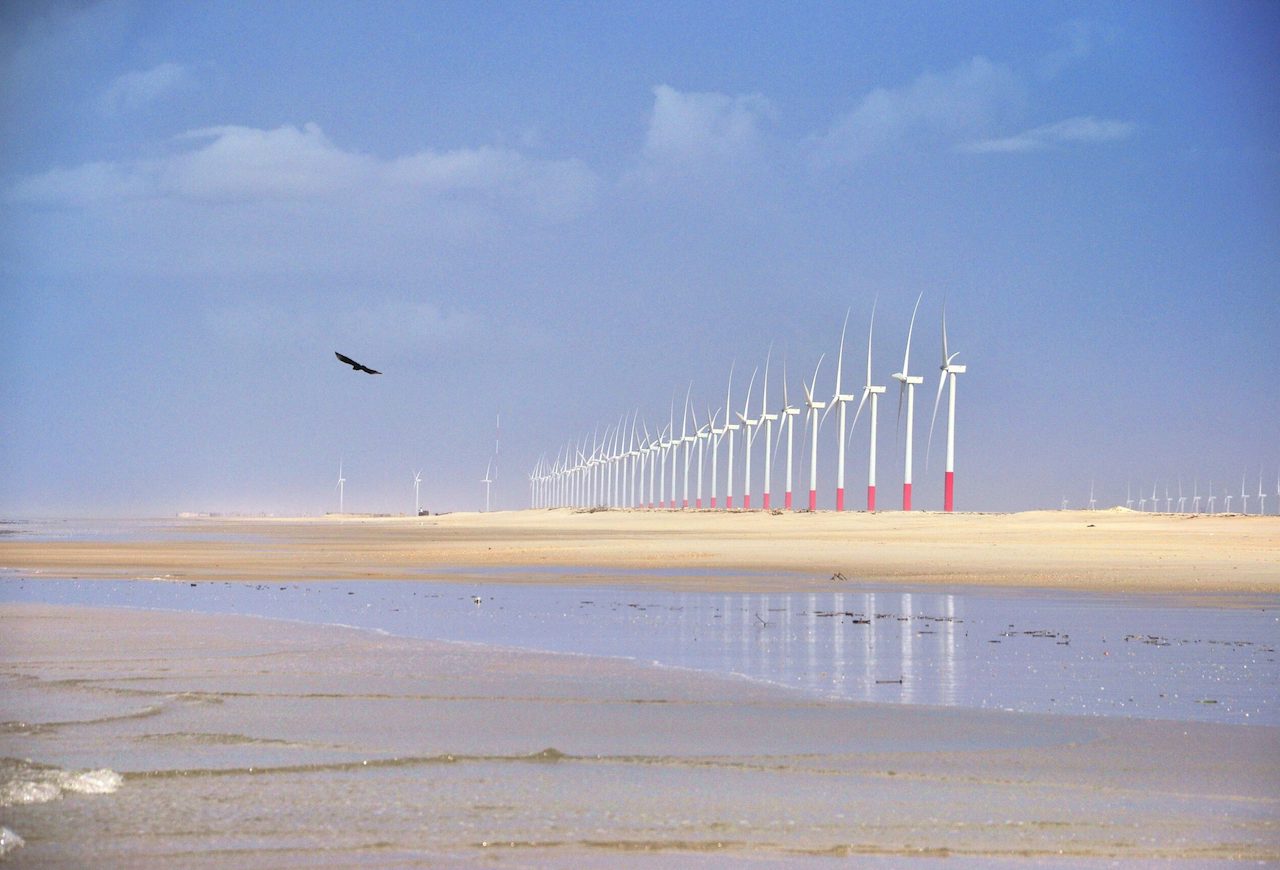‘Impact Investing and the Just Transition’ report: Infrastructure investors are playing a central role in funding the energy transition but sustainable infrastructure strategies are increasingly encompassing social impact and factoring in a just transition.
The term ‘sustainable infrastructure’ has often been a synonym for wind farms and solar parks. But while investment in renewables and the energy transition is a crucial area for combatting climate change, sustainable infrastructure investment strategies are increasingly going beyond this.
BlackRock is a good example of large-scale capital deployment in the energy transition. It manages over $50bn (€46bn) globally, including approximately $10bn through its dedicated climate infrastructure platform, one of the largest globally. This has invested in over 400 wind, solar, battery-storage, transmission and electric-vehicle infrastructure projects.

Katherine Sherwin, global head of infrastructure and real estate sustainable investing, says: “We believe these strategies – which look across the full value chain – exemplify how the industry is increasingly defining ‘sustainable infrastructure’.”
Likewise, Timo Werner, fund manager for the renewables impact fund KlimaVest, at Commerz Real, says: “In terms of generating measurable positive impact with our renewables investments, we focus primarily on decarbonisation, channelling capital into clean energy projects.”
But, he adds, “investors need to ensure to integrate social and other sustainability considerations – and elevate them to a potential veto status”.
A broader definition is key
According to Peter Bachmann, managing director of sustainable infrastructure at Gresham House: “Applying a social impact lens to infrastructure investing helps us to think more strategically across the project lifecycle… in a way that ensures not only economic and financial viability but also social and environmental sustainability.
Gresham House, which manages the British Sustainable Infrastructure Fund (BSIF), is a founding member of the Just Transition Finance Challenge, which aims to mobilise more public and private capital into investments that support a just transition. Gresham House says BSIF has helped create around 2,500 jobs and generated over £100m of revenue per annum for local economies and communities across the UK.

Bachmann says: “Addressing some of today’s biggest challenges requires a holistic approach and solutions, since societal and environmental challenges are inextricably linked. We believe that achieving net zero is a broad and non-linear challenge. Infrastructure to address environmental challenges often receives more focus and investment than social infrastructure. However, equal access to core services such as education and care, for example, are enablers for improved economic and sustainability outcomes.”
Addressing social impact head on
Many fund managers are taking up this challenge to have more of a social impact perspective. For example, BlackRock is currently raising its fourth Global Renewable Power Fund, and Sherwin says: “The strategy adheres to the Operating Principles for Impact Management, which includes having a strong focus on social and community impact… in addition to contributing to the build-out of renewable power generation, storage and distribution.”
Similarly, BNP Paribas Asset Management is increasingly cognisant of social impact in its infrastructure debt strategies. Vincent Guillaume, investment director, says: “We have financed key assets for the healthcare, education or public transport sectors.” He recently arranged debt investment for the Finnish company Parmaco, which develops educational buildings.

This shift has implications. Alina Osorio, president of Fiera Infrastructure, cautions: “It might be an obvious point to make, but social value doesn’t automatically crystallise from committing capital. Once you bring a new investment into the portfolio, you still have to monitor social key performance indicators and map operational practices against UN sustainable development goals to identify how invested capital is helping to address global social challenges and contribute to the community over an investment horizon.”
A growing number of infrastructure investment companies are wholly focused on social impact. Newcore Capital Management’s funds seek to create new social infrastructure space such as schools and clinical healthcare, and to refurbish buildings in the same uses to keep them functional for the long term. “We are very much looking to have a social impact,” says CEO Hugo Llewelyn.
But he cautions that many investors involved in infrastructure investing are contending with issues. “Many private equity funds have unsustainable balance sheets currently and are thus not able to focus on long-term aims but instead are using all the cashflow to deal with their lenders.”
He also warns that funds should ideally be onshore in terms of their operations too, and not set up aggressively from a tax perspective. “If the owners of managers are squirrelling all their profits offshore and not paying any UK tax, it feels a bit trite for them even to publish [impact statements] saying how many poor people they have helped.”
A focus on communities
A focus on communities is also crucial. Bachmann says: “Communities can bring local expertise in the project implementation with valuable insights that can be incorporated into the design and operational aspects. Investors tend to be very focused on the cost-benefit analysis of a project. We have a responsibility to make sure the benefit to society is also factored in.”
Bernd Schumacher, co-head of infrastructure at Golding Capital Partners, agrees: “A successful infrastructure project requires significant social buy-in from local stakeholders. Social acceptance also plays a key role in many public bidding or auction processes. This makes social impact considerations one of the main gateways to a successful infrastructure project.”
Christian Schuetz, head of sustainable investing at Golding, also warns: “Infrastructure investments could come with significant positive but also negative externalities to various local stakeholders. That is where the concept of just transition comes in and becomes indispensable. Through consideration of local communities – for example, by applying a strong local supplier and sourcing strategy – investors can support local communities providing for a social benefit.”
Improving access
This approach requires a focus on communities’ access to key facilities. Osorio warns that renewable energy assets can often be a source of inequality. She says: “Access to affordable, renewable energy varies considerably depending on geography and the state of the pre-existing grid. Every aspect of this supply chain needs to be decarbonised and, in the installation of this new-economy infrastructure, there is an opportunity to extend the reach of renewable and circular-economy energy.”
New approaches might offer new opportunities here. “While it will be hard for local communities to participate in the financing of offshore wind projects, there is a huge opportunity to make smaller-scale and local-led investments in renewables – either solar, biogas, electric-vehicle charging, storage,” says Harry Boyle, co-portfolio manager of the Impax Sustainable Infrastructure strategy.
An example from Fiera’s portfolio is PureSky Energy, a solar and battery-storage platform. It provides local community businesses, homeowners and renters – including those with low to moderate incomes – access to the cost-saving benefits of solar energy that they might not otherwise have due to financial limitations or roofline suitability.
“Equitable access to low-cost renewable energy is critical to enable a just transition,” says Bachmann. “We need more ‘prosumers’ who are consuming as well as producing energy to give households and communities the best chance of minimising their impact on the planet.”
Access to the internet is also relevant here. “The internet is now central to the daily lives of most of the World, with surging demand for connectivity from businesses, schools and working from home,” says Sherwin. There is a need for new digital infrastructure as well as upgrades to existing networks especially in rural areas. “We believe that providing technology solutions and connecting rural communities can have positive societal impacts through expanded educational options and increased economic mobility, whilst also building resiliency into local economies and supply chains.”
Guillaume also believes Infrastructure investors can bring a positive social impact by supporting the deployment of broadband to rural communities or facilitating access to 4G/5G connectivity through the deployment of telecom towers in ‘white areas’. “These digital infrastructure assets primarily have a social impact, bringing internet connections and high-speed connectivity to rural communities across Europe, bridging the internet divide and helping to meet social development goals identified by the EU.”
Improved internet access supports the development of home working, which, Guillaume says, “not only reduces the commercial rent burden of the business but also offers individuals a lifestyle away from urban areas if they desire thus providing an additional economic boost for rural communities – all facilitated by investment in telecoms infrastructure”.
Boyle also notes better internet connections can “limit work-related travel and thus take the pressure off congested road and rail travel routes, which should lead to less ‘overbuild’”.
Gresham House has invested in two fibre operators helping to address the internet access challenge: Wildanet, based in Cornwall and the Southwest of the UK, and GoFibre, operating in the Scottish Borders and North of England. Gresham House commissioned an independent report from the Good Things Foundation to quantify the economic, social and environmental benefit of Wildanet rolling out fibre across Cornwall. It found for every £1 spent on digital inclusion, there is an average return of some £10, including social wellbeing and economic impact.
Guillaume says: “Investors can play a central role by investing in infrastructure providing essential services to the benefit of the communities, such as healthcare, education or digital assets, or by supporting the circular economy businesses.”

This article is part of the ‘Impact Investing and the Just Transition’ report, a collaboration between Impact Investor and our sister publications IPE and IPE Real Assets.
You can download a digital copy of the report here.







